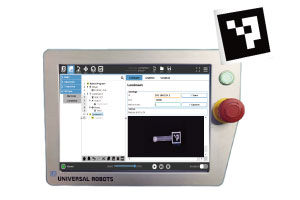What is Deep Learning?
Deep learning is an advanced version of machine learning that uses a large amount of data to train an AI model. The key difference is that machine learning uses algorithms to analyze data, while deep learning uses the concept of hierarchy as the basis for its algorithms. By simulating the way the human brain operates, deep learning creates an artificial neural network consisting of mathematical functions. Through extensive training, complex computations are carried out, enabling the system to handle unstructured data and make judgments that mimic human behavior.

How Does Deep Learning Work?
Deep learning works by using artificial neural networks, which are multi-layered structures that analyze data through layers of computations, allowing for complex patterns to be identified and accurate predictions to be made.

Let’s take the example of a child learning to recognize birds in images. The parent first points to the bird in the picture and makes the correct sound. The child then tries to mimic the sound, which is corrected by the parent until the child understands the word. This learning process is similar to how artificial neural networks operate.

An artificial neural network consists of several layers, including the input layer, the hidden layer, and the output layer, each with its own weights and variables. The nodes in each layer analyze different features of the image. For example, the lowest layer analyzes the contrast of black and white pixels, while the second layer distinguishes lines based on the data from the first layer. By computing non-linear functions across multiple layers, the output layer produces the final value, which is the image’s classification and recognition.
Since these types of neural networks require multiple layers of neurons for data processing, they need to be compared layer by layer to operate, which makes the computational complexity relatively high. This is why deep learning is associated with the concept of ‘depth’.
Why is Deep Learning Important?
Deep learning has been around since the 1980s, but it was not until recent years that high-performance processors and hardware advancements significantly improved computational speed and efficiency, making it possible to analyze large and complex data through deep learning. This technology is continuously evolving, and researchers and data scientists are using deep learning programs for speech, image, and text recognition, to indirectly drive various AI applications that we see in our daily lives.
What are the Applications of Deep Learning?
Deep learning is a popular AI technology with various applications, including speech recognition, natural language processing, and image recognition.
Speech Recognition
The main purpose of speech recognition is to enable computers to understand human speech and automatically convert it into text, followed by executing tasks based on the speech signal. Common applications of speech recognition include speech document retrieval, data entry, speech navigation, and indoor device control (controlling the temperature of a thermostat, turning on/off lights, managing home security systems, etc.).
Natural Language Processing
Natural language processing (NLP) is a branch of AI that helps computers understand and interpret human language. NLP applications are already deeply embedded in our daily lives. For example, virtual assistants like Apple’s Siri and Amazon’s Alexa recognize user commands through speech recognition and provide corresponding responses based on the conversation information, enabling users to effectively manage personal affairs. As IoT devices become more widespread, intelligent assistants are being used in the workplace for tasks like recording conferences and providing automated customer service through chatbots.
Image Recognition
The main purpose of image recognition is to allow computers to extract information from images and videos, enabling them to understand the data through deep learning and to assist humans in making data judgments. Image recognition is a growing area in deep learning, with various applications such as product defect detection, medical imaging, facial recognition, and license plate recognition.
What Challenges Does Deep Learning Face?
Although deep learning applications are becoming increasingly common, the advancement of deep learning technology still faces some challenges.
High-Quality Data
High-quality data refers to data that’s clean, complete, and relevant to the model’s objective. Deep learning relies on a large amount of data—generally the more data available the better the AI model can produce precise results. However, it’s crucial to note that the presence of anomalies or erroneous information in the dataset can significantly impact the interpretation of the deep learning model. Thus, to achieve accuracy in deep learning algorithms, it’s crucial to have extensive training with high-quality data. By using high-quality data for training, deep learning algorithms can learn patterns and relationships in the data effectively, resulting in better performance and more precise results. Therefore, obtaining high-quality data is a critical factor in the success of any deep learning project.
Hardware and Software Capabilities
As AI technology continues to advance, large-scale data training has become a critical component for building highly accurate deep learning models. In addition to using high-quality data, it is important to have the necessary hardware and software capabilities to effectively process and analyze data. High-performance GPUs and processing units are essential for efficient data processing, and having the right infrastructure is necessary to achieve optimal results in deep learning algorithms.


